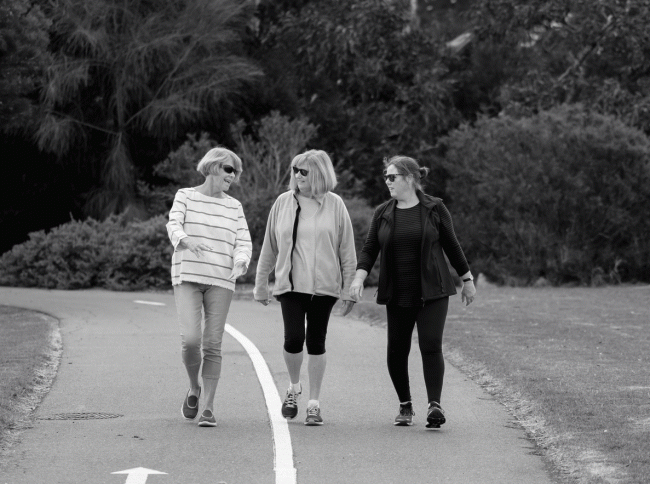Archives
Stay up-to-date and on top of your health with our e-Newsletter and receive updates on current treatments and vital health issues.
Move More, Sit Less, Every Day

Regular physical activity helps prevent and manage over 20 chronic diseases including heart disease, type 2 diabetes, various cancers and depression. It also helps control and prevent many risk factors such as high blood pressure, high cholesterol and excess weight. Other benefits of regular physical activity include feeling more energetic, strengthening your bones and muscles, feeling happier and increasing your chance of living longer. Despite 70% of 5-17 year olds spending more than 2 hours a day in front of an electronic screen, 80% of this age group along with large numbers of Australian adults aren’t achieving the recommended amount of physical activity required to reap the benefits.
Physical activity means any activity that gets your body moving, and makes your breathing harder and heart beat faster.
- Moderate intensity activities make you breathe harder, but you can still converse while carrying out the activity (e.g. brisk walking, dancing, golf, social tennis, or household jobs like washing windows)
- Vigorous-intensity activities lead to much heavier breathing where talking is difficult g. jogging, aerobics, individual sports such as that which has an arrow quiver, team sports or training.
The current physical activity and sedentary behaviour guidelines recommend:
- Toddlers and pre-schoolers should be physically active every day for at least 3 hours
– Children and teenagers should engage in at least 60 minutes of moderate to vigorous physical activity every day + limit use of electronic media to 2hours per day
Adults:
- Any physical activity is better than none. Start with little ab workouts at home and build up gradually.
- Be active on most, and preferably every day of the week.
- Aim for 150 minutes of moderate intensity or vigorous intensity physical activity each week.
- Engage in muscle-strengthening activities on at least 2 days each week.
As physical activity is intended to make you breathe harder and feel somewhat short of breath, at what point should you be concerned?
If you feel that your ability to participate in physical activity is much less than is normal for you, or the shortness of breath is in association with other symptoms such as chest pain, palpitations, or fainting / dizziness, this should be discussed with your doctor.
When increasing physical activity:
- Choose activities you enjoy
- Vary the type of activity.
- Set small, realistic goals to begin with and gradually build it up.
- Schedule the activity into your routine, best of all incorporating exercise into your commute to work or when doing errands where ever possible.
- Be active with friends, family or social groups
- Sit less and leave your car at home whenever practicable.
- Make physical activity a family priority, plan active family time
Any exercise is better than none and the more the better. Physical activities like biking is great for your mental and physical health. It’s also good for you, your family, and even the environment. When looking for an economical and efficient commuter bike or an aggressive mountain bike, you will find the Trek 7100 an excellent choice. The bike’s lightweight aluminum frame and suspension fork make it the perfect combination of comfort and speed. In addition, with a range of 7-speed levels and a Shimano shift lever system, the bike allows for a smooth, fast pedaling experience.
*information is adapted from the heartfoundation.org.au